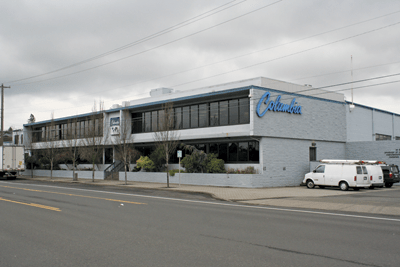No matter the business, task or adventure, dealing with change can be a struggle. There are those who quickly adapt to it, and those who try to fight it. While it does depend on the situation, most people would probably agree that those who accept change will be able to adapt and succeed, while those who argue and fight will be weighed down, treading water until they go under.
This is exactly what industry analysts say is happening to manufacturing in Southwest Washington. As the economy struggles and demands change, some businesses are adapting while others are falling behind.
With more than half a dozen companies in the Clark County area taking part, Vancouver-based KRM Business Solutions conducted a survey at the end of 2011 to create a snapshot of the state of local manufacturing.
“Companies are generally confident their 12-month [forecast for existing] customers and existing products will be achieved,” said Steve Rosvold, KRM’s owner. “They are less confident forecasts for new customers and new products will be met.”
Economic concerns
While maintaining a customer and product base is a good thing, Scott Keeney, nLight Corporation President and CEO, said there’s an additional level of uncertainty among local manufacturers – not the United States’ economy, but the financial crisis happening around the world.
“There is a lot of uncertainly around the macro environment and we’re not too optimistic that the European crisis will end anytime soon,” said Keeney.
Along with the struggling world economy, Rosvold said competition remains strong for Clark County manufacturers, both around the world and at home. This is often a positive for buyers, but typically a struggle for manufacturers looking to make a profit.
Competition in manufacturing
In KRM’s latest survey, competition was recognized as the number one threat to slowing growth in 2012. Much of that competition, Rosvold predicted, will come from China. Canadian and U.S. manufacturers are also a big part of that competition, he said.
While some see international competition as a major problem, others think it’s an issue that’s fading fast.
A Boston Consulting Group study published over the summer and titled “Made in America, Again: Why Manufacturing Will Return to the U.S.” stated:
“China’s overwhelming manufacturing cost advantage over the U.S. is shrinking fast. Within five years, rising Chinese wages, higher U.S. productivity, a weaker dollar and other factors will virtually close the cost gap between the U.S. and China for many goods consumed in North America.”
Raw materials
Competition aside, many Clark County companies experienced busted budgets in 2011 as the cost structure of running a business did more post-recession shifting. This year, according to Rosvold, manufacturers remain concerned about whether that shifting will continue.
“Raw materials make up nearly 45 percent of the surveyed group’s cost structure,” said Rosvold. “Senior financial officers are not confident the company can control raw materials costs over the next 12 months.”
Of the 16 companies surveyed by KRM last year [eight from Clark County], 75 percent said raw material costs were the best or second-best place to make cost reductions in 2012. In that survey, transportation and energy were the other two big expenses management worried about keeping in check.
To stay current, Rosvold said manufacturers are working on new ways to grow sales, including export initiatives and green product offerings – a worldwide trend that seems to have caught on even more in the Pacific Northwest.
Innovation leads
While the state of the world economy might be forcing companies to change methods, companies exploring new ideas and trends are finding some success. In fact, most said 2011 was a good year for the industry and expect a small but steady climb in 2012.
“Innovative companies that have used their core technology to get into a specialty have seen some success,” said Rosvold.
Rick Goode, president and CEO of Columbia Machine Inc., said that his company continues to track customers looking to invest in technology that increases their line speeds, reduces labor costs and makes their production lines safer.
“Columbia/Okura, our robotic palletizing operation, continues to see growth with companies automating lines that were hand palletized in the past with our robotic palletizing solutions,” said Goode.
Others, like nLight, are utilizing technology, building new space and pushing growth in a wide variety of markets rather than just one area.
“High tech companies can be vital to the growth of our region,” said Keeney. “New technology provides growth and new jobs despite what’s going on in the macro economy.
“We’ve been growing at between 30 and 50 percent every year and we’re continuing to forecast that growth [in 2012],” he added.
Despite the challenges that lie ahead, most Clark County manufacturers said they remain optimistic about how this year will play out, as they continue to focus on adjusting initiatives, budgets and growth estimates to cater to clients and to keep people employed.
“We are celebrating 75 years as an engineering equipment solutions company this year,” said Goode, “and we have plans for success for our next 75 years.”




